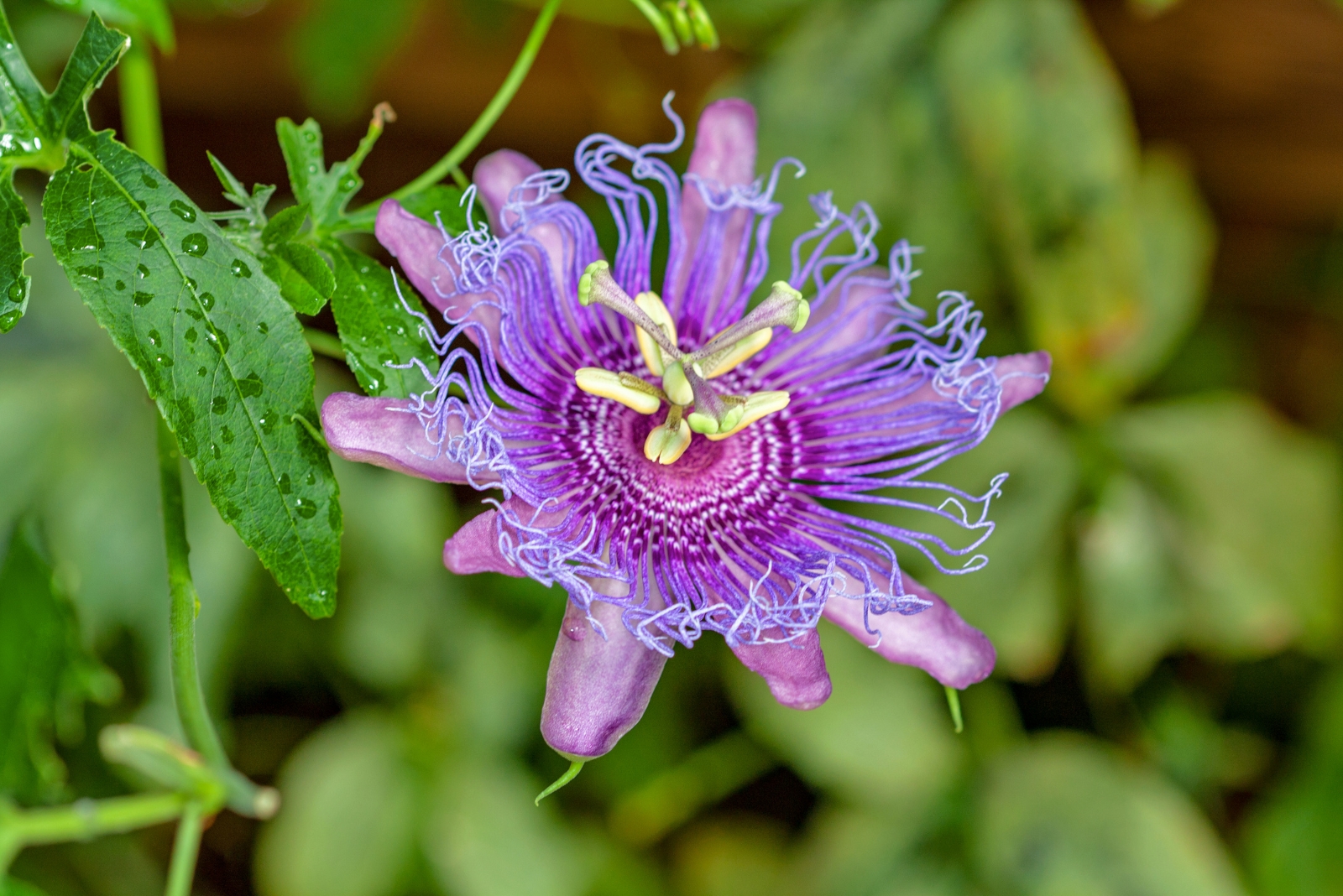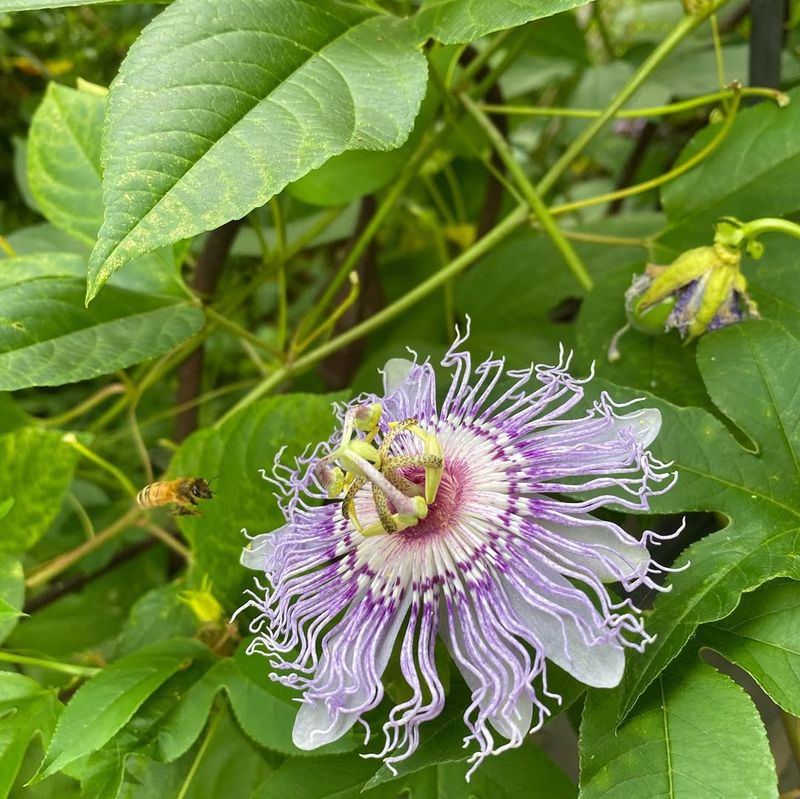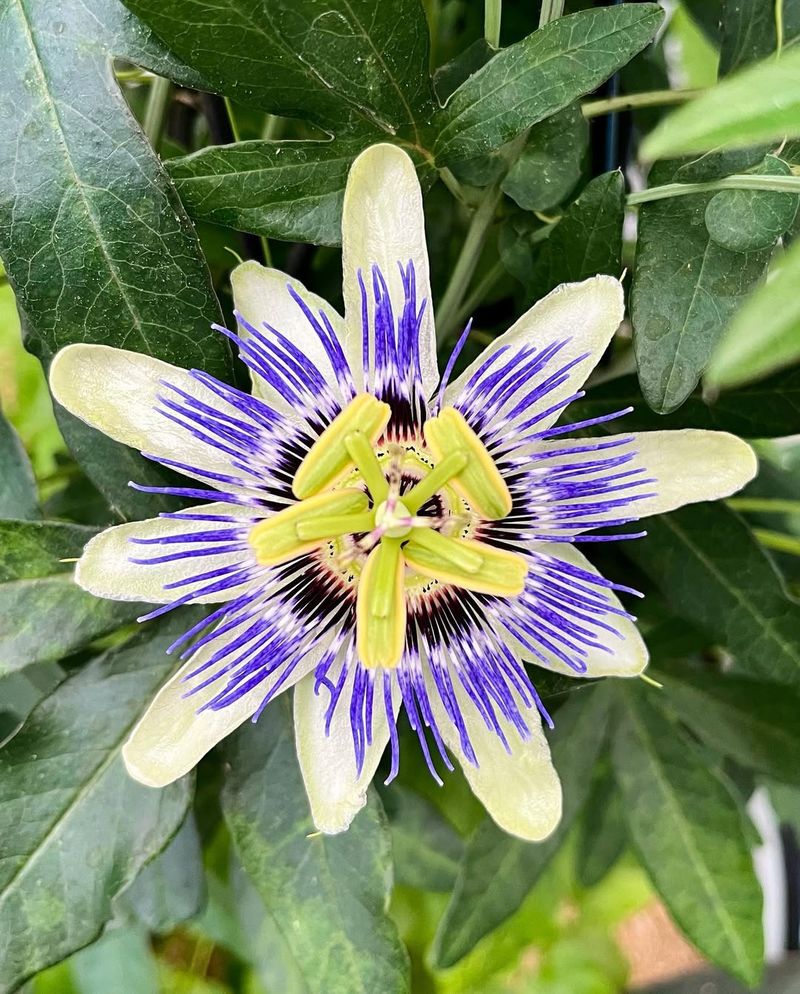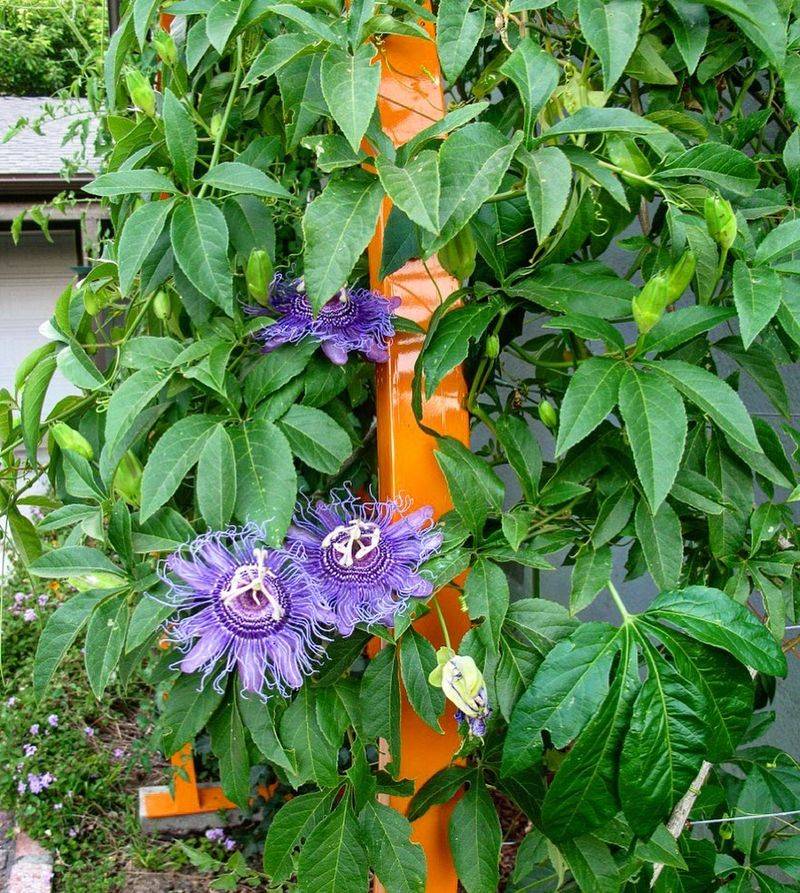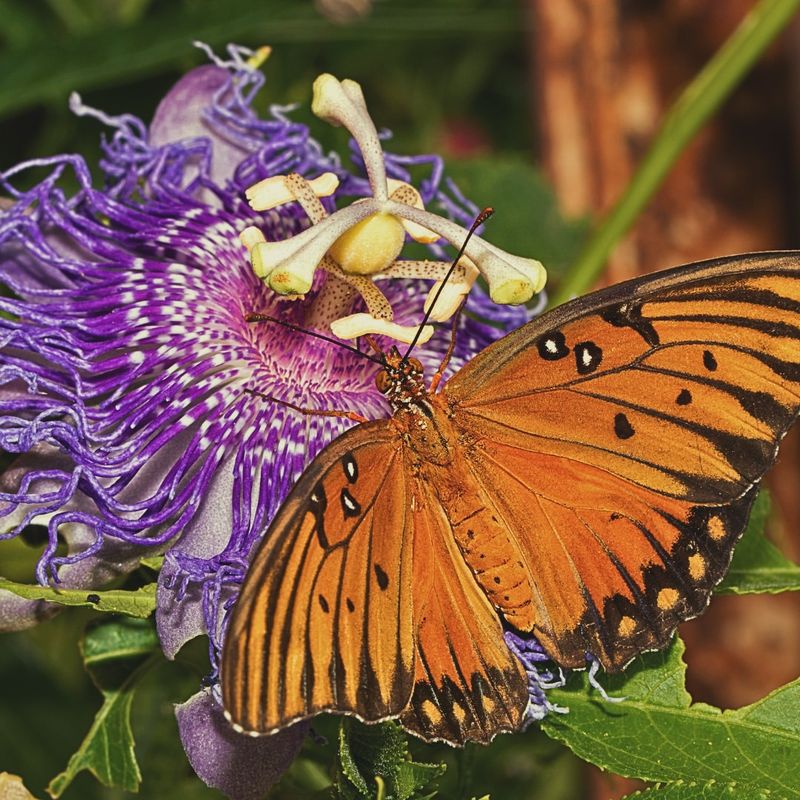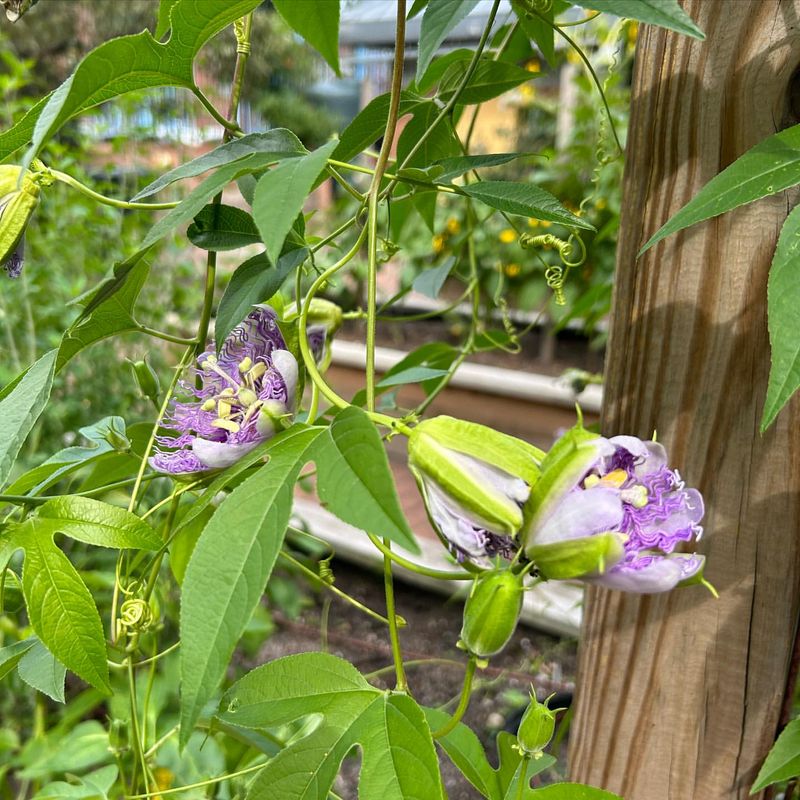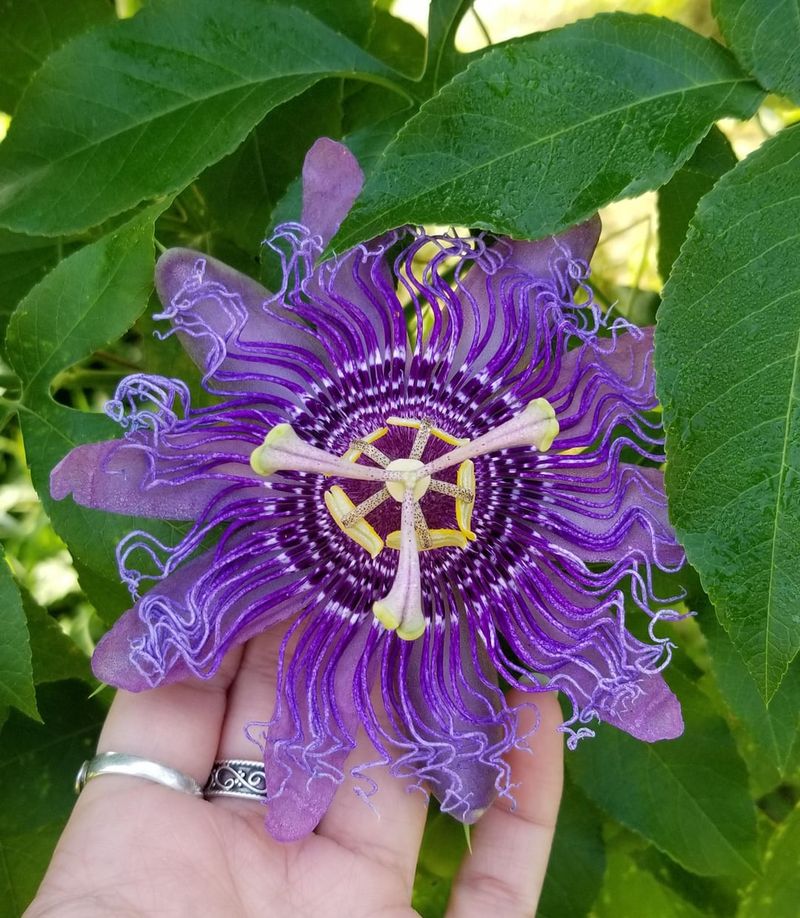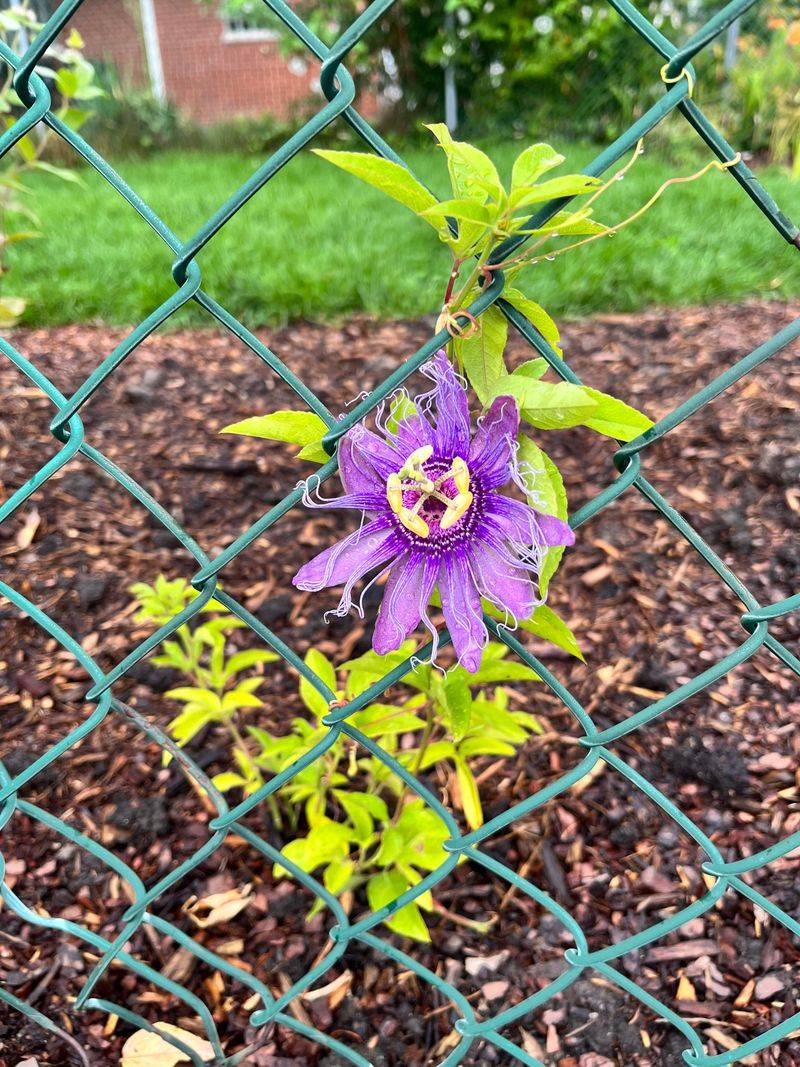Looking for a plant that can transform your plain fence into a stunning purple masterpiece? Passionflowers are climbing vines that produce some of the most unique and beautiful blooms you’ll ever see.
Tennessee gardeners love these plants because they grow fast, attract butterflies, and can handle the state’s unpredictable weather. Get ready to learn some amazing facts about this incredible vine!
1. Native Species Thrives in Tennessee Climate
Passionflower vines actually originated in North America, making them perfectly adapted to Tennessee’s hot summers and mild winters. Passiflora incarnata, the native purple passionflower, grows wild throughout the southeastern United States.
Unlike tropical plants that struggle with temperature changes, this tough vine can survive winter freezes and bounce back each spring. Many gardeners don’t realize they’re planting a native species that’s been thriving in Tennessee soil for thousands of years, supporting local wildlife and ecosystems naturally.
2. Intricate Blooms Look Like Alien Spacecraft
Each passionflower bloom features layers of petals, colorful filaments, and unusual structures that resemble something from outer space. The purple and white flowers can measure up to four inches across, creating a dramatic display against green foliage.
Spanish missionaries named the plant because they saw religious symbols in the flower’s parts, including a crown of thorns. Kids often stop and stare at these bizarre blooms, fascinated by their complex design and vibrant colors that seem almost too perfect to be real.
3. Grows Lightning Fast During Summer Months
Once established, passionflower vines can grow up to six inches per day during peak summer heat in Tennessee. A single plant can easily cover a ten-foot section of fence in just one growing season.
Gardeners who want quick privacy or shade appreciate this rapid growth rate that outpaces most other climbing plants. The vines use curling tendrils to grab onto anything nearby, whether it’s a fence, trellis, or even other plants, climbing upward with remarkable speed and determination.
4. Butterfly Magnet For Gulf Fritillaries
Gulf Fritillary butterflies depend entirely on passionflower vines as their host plant, laying eggs on the leaves so caterpillars can munch away. Watching bright orange butterflies flutter around your fence becomes a daily entertainment once you plant passionflowers.
The caterpillars might eat some foliage, but the plant grows so quickly that damage rarely matters. You’ll enjoy a front-row seat to nature’s life cycle as eggs transform into spiky orange caterpillars, then chrysalises, and finally beautiful butterflies right in your backyard.
5. Produces Edible Fruit Called Maypops
After flowers fade, green egg-shaped fruits develop that turn yellowish when ripe in late summer in Tennessee. Southerners call them maypops because the hollow fruits make a popping sound when stepped on.
Inside, you’ll find orange pulp with edible seeds that taste sweet and slightly tangy, similar to tropical passion fruit. Wildlife loves these fruits too, so you might need to harvest quickly before birds and possums grab them all. Many people make jelly or eat the pulp fresh right from the vine.
6. Traditional Medicine Plant With Calming Properties
For centuries, Native Americans and early settlers used passionflower leaves and roots to make calming teas and remedies. Modern research confirms the plant contains compounds that may help reduce anxiety and improve sleep quality.
You can still find passionflower extract in many herbal supplements sold at Tennessee health stores today. While it’s fascinating to grow a plant with medicinal history, always consult experts before consuming any homegrown remedies. The plant’s legacy as a natural relaxant adds another interesting dimension to your garden.
7. Easy Care Once Roots Get Established
After the first year, passionflowers become incredibly low-maintenance plants that rarely need attention. They tolerate drought, poor soil, and Tennessee’s humidity without complaining or requiring constant care.
Simply cut back dead vines in late winter, and new growth will emerge in spring. The plant’s root system spreads underground, sometimes popping up several feet away from the original planting spot. Perfect for busy gardeners who want beautiful results without spending hours on maintenance and watering schedules every week.

